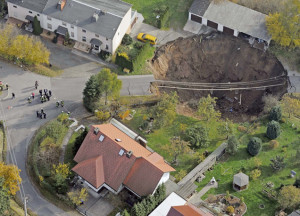If you can do something yourself why would you ever pay someone thousands of dollars to do it for you? Okay so most people can’t climb on their house and start replacing their roof or even go out and purchase a new air conditioner to be  replaced. Others feel like painting, setting up garage sales, cleaning and other tasks are just not worth paying for. On the other hand maybe there is a happy medium of what you feel comfortable and knowledgeable enough to do yourself and what you don’t. Typically it all comes back to $$$$ money and when you draw the line of how much you are willing to spend.
replaced. Others feel like painting, setting up garage sales, cleaning and other tasks are just not worth paying for. On the other hand maybe there is a happy medium of what you feel comfortable and knowledgeable enough to do yourself and what you don’t. Typically it all comes back to $$$$ money and when you draw the line of how much you are willing to spend.
Selling your house for sale by owner (FSBO) is much like playing the part of a real estate agent and broker. For a ball park estimate of cost, we will say in the majority of areas will range from 4%-6% of the sale price of the home. For easy mathematics on a $200,000 sale price of a house that is $8,000-$12,000 right off of the top. If the home loan is right-side-up you won’t see any of that money because that would just be less money you get back in the end, if you owe money that would be paid directly to the agents. The following information will give you an idea of how difficult it would be to sell your house FSBO so you can be the judge.
According to the National Association of Realtors they report that the majority of the FSBO properties end up ultimately listing with a relator, reasons why are because most buyers are represented by an agent and the majority of FSBO sellers price their homes too high which scare off potential buyers. If those are the biggest issues it seems like there is an easy fix and plenty of information available to people. Current homeowners looking to sell have a ton of resources which include proper pricing, how to hold open houses, making counter offers, escrow, inspections and other legal advice.
The biggest upper hand that the real estate company listing your home would have besides their previous knowledge would be their branding and advertisement. Their ability to get your home on and off the market maybe better than anything you could pull off. On the other hand if the home is priced right it may not even matter, just remember it only takes one person to buy it. Not having the legal knowledge could be very scary to most homeowners that do not want to become a victim but with a little due diligence it would be very possible to find the right information.
Even if you don’t have a large real estate name behind you, getting your property out and seen is still very feasible. Setting up plans for proper signage and advertisement online along with having your home readily available to be shown and visited is most important. Of course a relator may know how to take the best pictures and properly stage your house but this can all be done on your own. A fresh coat of paint, nicely trimmed yard and de-cluttering of rooms like the garage and living areas cab go a long ways when you are presenting your home to buyers. Just remember the relator isn’t going to clean and paint your house for you, they will just be telling you what they need you to complete so ultimately you are doing the work anyways.
Overall on a scale of 1-10, one being posting an ad on Craigslist and ten being you trying to sell snow cones to an Eskimo I would say with a little effort I would rate this at a seven just because of the legal part. As far as I am concerned any house can sell in any market depending on your listing price. Some areas sell houses at the asking prices in a few days, if this took you a little longer would it be worth the potential $10,000 savings? Just remember you could actually get the buyer lined up and ready to go while just opting for the legal and financial portion of the transaction. Either way if you are going to buy, buy in Florida and when you do be sure to research your home-to-be using www.MoversAtlas.com.



